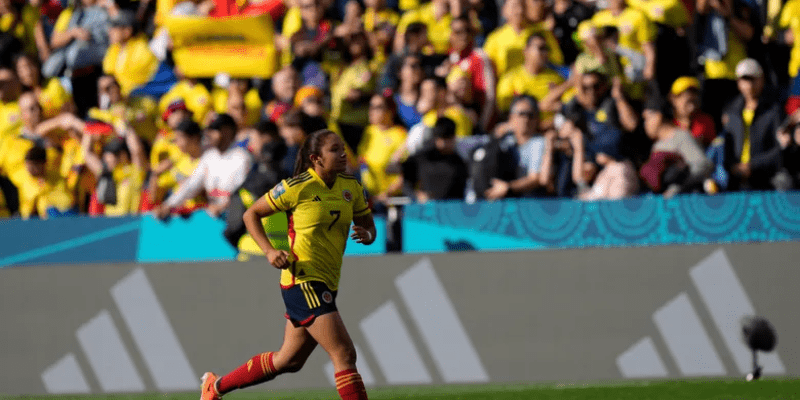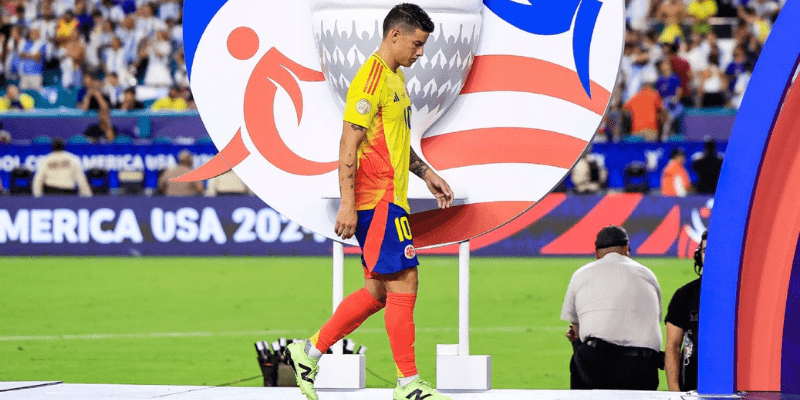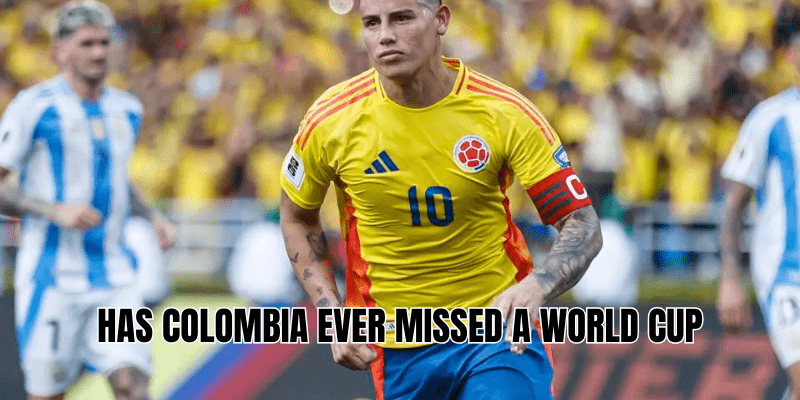Has Colombia ever missed a World Cup? The short answer is yes — often. But the full story is rich, tangled, and full of emotional chapters worthy of every fan’s attention. In this article, AnnuGoal will walk you through Colombia’s World Cup journey, the tournaments they skipped, the reasons behind those absences, and how the team has evolved into a South American contender.
Colombia’s World Cup appearances: a snapshot

Before we dive into the absences, it helps to understand when Colombia did make the World Cup. Their participation has been sporadic but memorable. Colombia has appeared in six FIFA World Cups: 1962, 1990, 1994, 1998, 2014, and 2018.
Here’s a quick breakdown of those appearances and performances:
- 1962 (Chile): Debut appearance. Group stage exit. edia])
- 1990 (Italy): Reached the Round of 16 — their best showing up to that point.
- 1994 (USA): Group stage elimination.
- 1998 (France): Again, exited in the group phase.
- Then came a long drought in qualifications.
- 2014 (Brazil): A resurgence — Colombia reached the quarterfinals, marking their best-ever performance. ikipedia])
- 2018 (Russia): Reached the Round of 16.
For the 2026 World Cup, Colombia has already qualified as of the latest updates.
So yes — Colombia has both confirmed appearances and many moments where they missed out.
When and why Colombia missed the World Cup

Early years and nonparticipation
In the early decades of the World Cup,, or failed to qualify:
- From 1930 to 1958, Colombia did not participate in many tournaments — either by choice, logistical constraints, or lack of infrastructure.
- By the time 1962 rolled around, Colombia made its first qualified appearance.
These early omissions were less about soccer failure and more about national capacity, football infrastructure development, and prioritization.
Qualification failures and droughts
Even after Colombia entered the World Cup stage, they frequently failed to qualify. Key droughts include:
- 1966, 1970, 1974, 1978, 1982, 1986 — Colombia missed out on all these tournaments.
- In particular, the stretch from 1998 to 2014 was brutal: Colombia failed to make the cut in 2002, 2006, 2010. That’s three straight World Cups missed.
- More recently, Colombia did not qualify for 2022, despite having a strong squad.
These absences often came down to tough competition in CONMEBOL (South American qualifying is notoriously brutal), inconsistent national team form, changing coaching regimes, and sometimes even internal football federation instability.
A special case: the 1986 withdrawal
One of the most curious episodes in Colombia’s World Cup history is their withdrawal from hosting the 1986 World Cup. Colombia had been selected as the host nation for the 1986 tournament, but due to economic and political issues, the country pulled out as host and did not participate.
This was not a failure to qualify — this was a decision at the national and governmental level, one that left Colombia without representation in a World Cup they would have hosted.
Periods of absence: patterns & turning points
To better understand how often and why Colombia has missed the World Cup, it helps to divide their history into phases.
Phase 1: Foundations and early nonparticipation (1930s–1950s)
During this period, Colombia was building its football identity and lacked the institutional strength to mount regular World Cup campaigns.
Phase 2: Initial breakthroughs and gaps (1962–1980s)
Colombia qualified for 1962, then failed to return until 1990. Much of this era was about establishing competitive consistency in South America.
Phase 3: The “Golden Generation” and collapse (1990s–2000s)
The 1990s saw Colombia emerge with star players like Carlos Valderrama, Freddy Rincón, and Adolfo Valencia. But after 1998, the collapse was dramatic: a 16-year hiatus followed.
Phase 4: Resurgence and steady presence (2014 onward, but with hiccups)
The qualification and quarterfinal run in 2014 reintroduced Colombia to prominence. They made 2018, then missed 2022, and have now qualified for 2026. The pattern shows that Colombia is now generally a contender in qualifiers — but not always guaranteed.
Consequences and lessons from missing the World Cup

Missing out on a World Cup can have profound effects — on players, federation credibility, fan morale, and even national identity. Here’s what Colombia has experienced:
- Talent frustration and generational gaps: When Colombia skipped 2002–2010, entire cohorts of players lost the chance to test themselves on the biggest stage.
- Federation instability: Frequent changes in coaching, politics, and administration have derailed long-term project planning.
- Reputational setbacks: Missing tournaments weakens a nation’s perception in international football and limits growth opportunities (sponsorship, youth development).
- Emotional pain for fans: The 2022 elimination, especially with stars like James Rodríguez involved, was a bitter blow for supporters.
Yet, these absences also forced Colombia to re-examine their system, renew youth development strategies, invest in scouting, and professionalize governance.
Colombia’s standout moments and “what ifs”
Even as many tournaments slipped past Colombia, when they did appear, they created headlines:
- In 1962, Marcos Coll scored arguably the most famous “olympic goal” in World Cup history — a direct goal from a corner — to draw 4–4 against the Soviet Union with Lev Yashin in goal.
- The 2014 World Cup was magical: James Rodríguez’s stunning volley vs Uruguay, Colombia’s run to the quarterfinals, and their dominance in the group stage.
- Faryd Mondragón became the oldest player ever to appear in a World Cup (43 years old in 2014).
- The dramatic elimination in 1990 by Cameroon, after Higuita’s infamous “scorpion kick” mistake and late goals — a match etched in Colombia folklore.
Imagine if Colombia had built more consistency earlier — perhaps they would have had dee. The “what ifs” linger.
Comparing Colombia with other South American powers
South America is brutal for World Cup qualification. Brazil and Argentina are perennial powerhouses, Uruguay and Paraguay punch above weight, and Ecuador or Peru occasionally disrupt.
Compared to many of its neighbors, Colombia has been more inconsistent:
- Brazil has never missed a World Cup.
- Argentina has missed only a few early ones.
- Uruguay, Paraguay, even Boli.
Colombia’s challenge has been turning potential into sustained qualification.
What “missing” in 2022 meant — and what 2026 brings
Missing 2022 was a stark message: even with world-class players, qualification isn’t guaranteed. The failure forced introspection. Injuries, tactical missteps, tight matches — all contributed to that absence.
Now, as Colombia heads into the 2026 World Cup with qualification secured, there’s renewed hope. This is a chance for redemption, for building legacy, and for proving that missing tournaments can become lessons — not curses.
Final Thoughts
Has Colombia ever missed a World Cup? Absolutely. Through nonparticipation, failures in qualifying, and even a controversial withdrawal, Colombia has spent as many seasons off the world stage as on it. But these absences carry storytelling power — of rebuilding, resilience, and rebirth.
For fans, historians, and analysts, Colombia’s World Cup odyssey is not about a perfect record. It’s about striving, failing, rising again. AnnuGoal invites you to explore every chapter: the missed chances, the thrilling comebacks, and the dreams yet to manifest as Colombia embarks once more on the global stage.
If you’re curious about Colombia’s route to 2026, key players to watch, or how their World Cup odds stack up with rivals — let me know. I’ll dive deeper.



